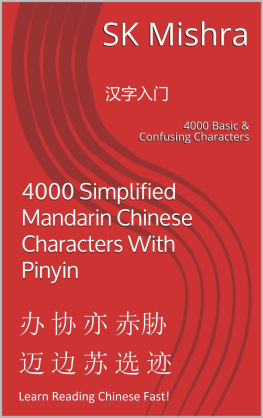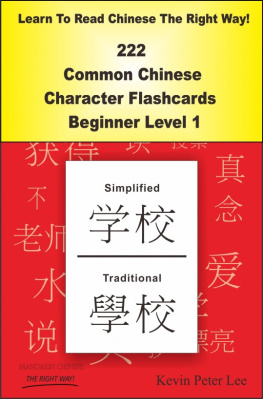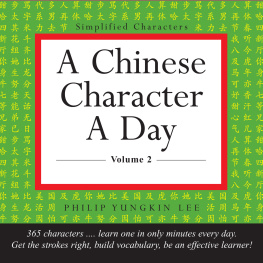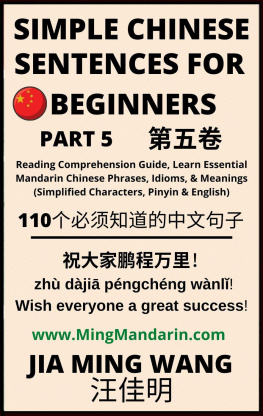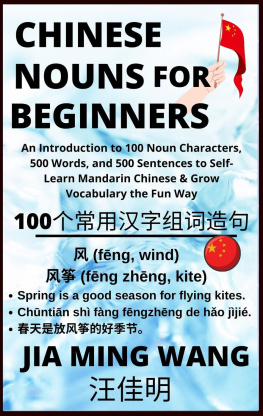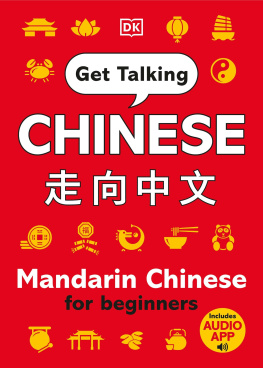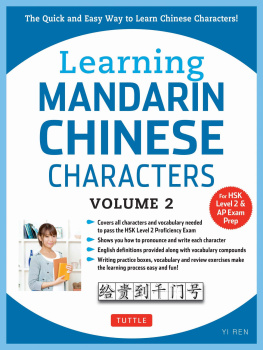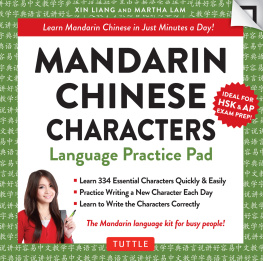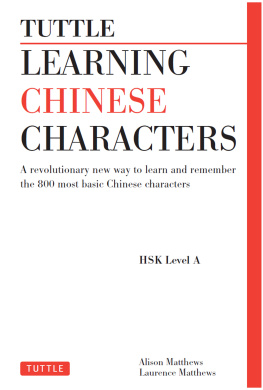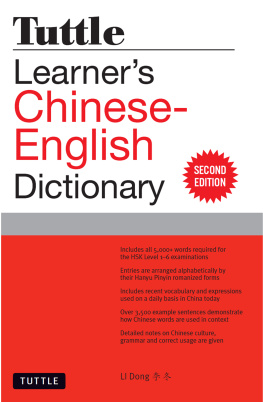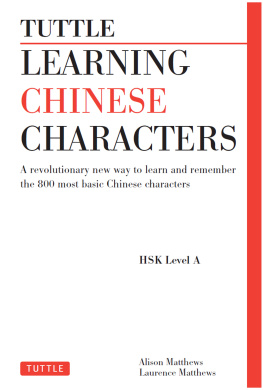4000 Simplified
MANDARIN CHINESE
Characters With Pinyin
The book 4000 Simplified MANDARIN CHINESE Characters With Pinyin provides a comprehensive collection of standard simplified Chinese characters with associated pinyin in a single volume. The book is broadly organized into different chapters. For the convenience of the readers, most of the chapters introduce about 100 new characters. The chapters are organized based on certain confusing themes. However, the themes are not necessarily the standard Chinese radicals.
The first chapter includes a basic introduction to the Chinese character radicals. The second chapter includes 100 commonly used characters. The rest of the chapters contain diverse character sets that may look similar (and confusing) to the non-natives, but are essentially different and usually carry diverse meanings. Since one Mandarin Chinese character could have multiple pinyin (and different meanings), the most commonly used pinyin is provided.
The author has tried his best to include the feedbacks from the native Chinese speakers to enhance the quality of character listing, and thereby help the language diggers to learn the Chinese characters reading (and memorizing) efficiently.
One of the main objectives of this book is to help the Mandarin enthusiast to focus and learn reading Chinese fast. Also, in order to keep the book simple and crisp, the meanings of the mandarin characters have intentionally not been included in the volume. However, to find the meanings of any particular character, a reader can simply type the pinyin in a translation software tool (such as Google Translate) and find various meanings associated with the characters.
SK Mishra obtained a PhD in Computer Science from Singapore. He lived in Singapore (2012-17) for pursuing PhD, and moved to Suzhou (Jiangsu province of China) in 2017 to explore further career interests.
4000 SIMPLIFIED
MANDARIN CHINESE
CHARACTERS WITH PINYIN
SK Mishra , Ph.D .
Published 2019
2019 SK Mishra
The right of SK Mishra, to be identified as the author of this work, has been asserted by him in accordance with sections 77 and 78 of the Copyright, Designs and Patents Act 1988.
All rights reserved.
No part of this book may be reprinted or reproduced or utilised in any form or by any electronic, mechanical, or other means, now known or hereafter invented, including photocopying and recording, or in any information storage or retrieval system, without permission in writing from the publishers.
Trademark notice : Product or corporate names may be trademarks or registered trademarks, and are used only for identification and explanation without intent to infringe.
Contents
I express my deepest gratitude to all my friends and colleagues who supported me writing the book 4000 Simplified Mandarin Chinese Characters With Pinyin . Im particularly thankful to the Singapore government for giving me an opportunity to pursue a PhD (in Singapore) with a full scholarship. In fact, this was the period when I developed a solid interest in Chinese culture, eventually moving to the mainland China. Im also thankful to the Chinese authorities for providing me career opportunity in Suzhou where I further enhanced my understanding of the vibrant Chinese culture, including the Mandarin language (, Ptnghu).
L earning a language usually comprises four broad aspects
- Reading (and comprehension),
- Writing,
- Listening,
- Speaking.
Learning a European language, such as English, involves learning a fixed alphabet. That is to say, once you master 26 English letters (A to Z), you can virtually read anything writing in a particular English manuscript. However, how much youll intuitively understand the manuscript would be heavily influenced by your vocabulary, grammar and contextual abilities.
When it comes to learning Mandarin Chinese, the most difficult part is to master reading (and hence comprehension) the mysterious Characters, partly because there is no fixed alphabet. In fact, each Mandarin Chinese character is basically a word and often carries multiple meanings. Also, one character may have different pronauncians. For example, the character has two sounds (cng: hide, zng- Tibet). Moreover, many characters look similar but they may be very different from one another. Look at the following characters:
Arent they looking too similar to each other? Here, Im adding more characters with the corresponding pinyin
bn | tu | ch | sh |
xi | k | zhu | zh |
y | lio | zhu | d |
ch | du | du | pi |
xi | du | ch | d |
mi | xi | q | zh |
bin | k | ju | d |
xun | du | ju | hn |
j | h | ch | hn |
s | w | k | ch |
As you can see:
- (du) and (du) have similar pinyin, but the tones are different.
- The characters (k) and (k) look similar and have the same pinyin, but the meanings are different.
In fact, you can find a variety of combinations of similar/different pinyins ( has two sounds: ju and jio). Another worth mentioning example is of the character which has two sounds (zhu, zho ) with the same meaning (claw).
No wonder, learning Chinese is indeed a complex and time consuming exercise. :)
That said, although mastering Mandarin Chinese is arguably a long journey, there are indeed certain aspects that make learning the language interesting and fast. For example, you can club the similar characters together (such as , , , ) and try to understand different meanings and pinyin. Learning the similar looking characters will enable you to distinguish them in the most conscious manner. Also, there is no well-defined tense in Mandarin grammar. The characters often contain radicals providing clues about the meaning of the characters (even if you dont know the pinyin).
Next page
